American Grad. MLRS M270 MLRS
American underestimation of the MLRS
For a long time, the US military relied on barrel artillery. Neither in the 1950-e, nor in the 1960-e years in the United States and NATO countries did not pay due attention to the development of multi-barrel rocket artillery. According to the prevailing strategy, the task of supporting the ground forces on the battlefield was to be solved by the barrel artillery, which favorably differed in high firing accuracy. During a large-scale military conflict with the Warsaw Treaty Organization (ATS) countries, the Americans relied on tactical nuclear weapons of the artillery barrels - 155-mm and 203-mm caliber shells. At the same time, the Americans considered the use of rocket artillery on the battlefield ineffective in modern warfare and somewhat archaic.
The fact that such an approach is erroneous, the Americans realized only in the 1970-ies. The next Arab-Israeli war of 1973 of the year had a great influence on the change of strategy, when the Israeli military managed to disable a large number of positions of Arab anti-aircraft missile systems in a short time by using multiple launch rocket systems (MLRS). The suppression of the air defense system provided Israel with air superiority. The ability to launch air strikes against enemy troops with impunity quickly led to a positive outcome for the war for Israel. U.S. intelligence noted this success and the role of the MLRS in hostilities. At the same time, experts in the field of the use of artillery in combat operations appreciated the successes of Soviet designers in the field of creating multi-barrel rocket artillery. The massive introduction into service of the modern 122 mm MLRS of the Grad family, which Moscow supplied to its allies, also did not go unnoticed. The BM-21 combat vehicle, which immediately carried 40 guides for launching a wide range of rockets, represented a formidable force on the battlefield.
The realization of the significant superiority of the USSR and its allies in tanks in the European theater of operations. The Soviet Union and the ATS countries could deploy three times more tanks on the battlefield than the NATO allies had. But there was also other armored vehicles with anti-nuclear protection, which were also actively developed and produced in series of thousands. At certain moments of the battle, there could be so many targets of a potential enemy on the battlefield that no barrel artillery could cope with their timely defeat.
Together, all this led to the fact that the military-political leadership of the United States changed its view of rocket-propelled multi-barrel artillery. It was a fundamental decision on the need to create your own MLRS. The distinctive features of the future combat vehicle were called, in addition to high density of fire and rate of fire, a sufficiently large caliber of the ammunition used. The final decision on the MLRS program was made in 1976. Since then, more than 5 billion dollars have been spent on the design stage, conducting tests, preparing serial production and mass deliveries to the American army. Vought Corporation (today Lockheed Martin Missiles and Fire Control) was selected as the project's lead contractor.
The cash costs of the program fully paid off when in the 1983 year the new 227-mm MLNM270 MLRS was adopted. This system of volley fire came into service with the US Army and Washington's NATO allies. The very name of the system was deciphered as Multiple Launch Rocket System (multiple launch rocket system), today in Western countries it has become a household name. It is this abbreviation that is used to refer to all weapons systems of different countries belonging to this class. The combat debut of the new American MLRS was the Persian Gulf War in 1991. The new multiple launch rocket systems proved to be highly effective in modern warfare, while the Americans used the M270 MLRS launchers to launch the MGM-140A short-range ballistic missiles with a cluster warhead.
Composition and features of the M270 MLRS complex
When developing the new MLRS, the Americans proceeded from using the installation as a nomadic weapon. This requirement made it necessary to create a highly mobile multiple launch rocket system, which could easily change firing positions, as well as fire from short stops. Such tactics are best suited for solving a large number of the most important tasks facing artillery today: counter-battery combat, suppression of the enemy’s air defense forces and means, defeat of advanced units. Thanks to mobility, self-propelled artillery mounts can solve such problems with the greatest efficiency, since they can quickly get out of the retaliatory strike by changing firing positions.
As a platform for their MLRS, the Americans chose a tracked version, taking as a basis a modified chassis from the M2 Bradley infantry fighting vehicle. The chassis is represented by six road wheels and two support rollers (on each side), the drive wheels are front wheels. Thanks to the use of a caterpillar chassis, the multiple launch rocket system received the same mobility and cross-country ability as the BMP and the main battle tank M1, as well as the ability to move freely over rough terrain. On the launcher under the cockpit, which can be folded forward, providing access to the power plant, placed a 500-horsepower diesel 8-cylinder Cummins VTA-903 engine. This engine provides the combat vehicle weighing almost 25 tons with the ability to move on the highway at a speed of 64 km / h, the maximum speed on rough terrain is 48 km / h. The designers placed two fuel tanks with a total capacity of 618 liters in the rear of the vehicle under the base plate of the artillery unit. There is enough fuel supply to overcome on the highway up to 485 km. The installation is air transportable, the M270 MLRS can be flown over the air using military transport aircraft aviation: C-141, C-5 and C-17.
In addition to high maneuverability and mobility, the launcher received a reservation. In particular, a triple cabin located in front of the M993 cargo conveyor is fully armored, and the cabin is also equipped with a ventilation, heating and sound insulation system. There is a sunroof in the roof, which can be used both for ventilation and for emergency evacuation of the machine. The cab windows are equipped with bulletproof glass and can be closed with metal shutters with armored panels. In the cockpit are the jobs of three people - the driver, the commander of the launcher and the operator-gunner. In addition to the cabin, the reservation received a launch loading module, which houses two transport and launch containers and a loading mechanism. This solution increases the survival of the installation in combat conditions. If the machine does not have time to get out of the artillery strike in time, the armor will protect the installation and the crew from fragments of artillery shells and mines exploding at some distance.
The artillery part of the launcher is represented by a fixed base with a rotatable frame and a gyro-stabilized rotating platform with an M269 starting loading module (PZM) mounted on it. The composition of this module includes two TPKs with a reloading mechanism, which are placed inside an armored box-shaped truss. TPK are disposable. TPK assembly is carried out at the plant, it is there that rockets are placed inside and the container is sealed. In such TPK shells can be stored for 10 years. The guides are located in the TPK itself, each such container contains 6 fiberglass pipes rigidly fastened to each other by a holder of aluminum alloy. A feature of the M270 MLRS MLRS is that inside the guides, designers placed spiral metal skids that, when fired, give rockets a speed of approximately 10-12 revolutions per second. This allows for the stability of the ammunition in flight, and also compensates for the eccentricity of traction. For loading, aiming and salvaging 12 shells from two launch containers, the installation needs only 5 minutes, the time of the volley itself is 60 seconds.
The MLN MXX MLRS, which was adopted by the U.S. Army in 270, in addition to the direct combat vehicle, the launcher, included a transport-loading vehicle (TZM), transport-launch containers (TPK), and 1983-mm rockets themselves. Today, each launcher is served by two transport-loading machines at once. These are high-passability 227-tonne M10 trucks with 985x8 wheel formula or newer M-8 with 1075x10 wheel formula. Each of these machines can be equipped with a trailer. On each machine with a trailer, up to 10 transport launch containers can be transported. Thus, for each launcher there are 8 shells (108 + 48 + 48 already on the launcher). The weight of the equipped TPK is 12 kg, for working with them on the TZM there are slewing cranes with a lifting capacity of up to 2270 tons.
M270 MLRS rigs debut
The combat debut of the American multiple launch rocket system was the operation of multinational forces during the first Gulf War. The units were massively used during Operation Storm on Empty in 1991. It is believed that the Americans involved in the operation from 190 to 230 launchers (according to various sources), another 16 installations deployed the UK. On Iraqi positions, they fired almost 10 of thousands of unguided rockets with cluster warheads. The positions of air defense and Iraqi artillery, accumulations of armored vehicles and vehicles, helipads were subjected to blows. In addition, at least 32 tactical ballistic missiles MGM-140A were fired at Iraqi positions (up to two of these missiles can be placed on a launcher). These missiles have a destruction range of up to 80 km and immediately carry 300 ready-to-use combat striking elements.
At the same time, the vast majority of shells used in Iraq were the simplest unmanaged 227-mm M26 rockets with a cluster head equipped with cumulative fragmentation submunitions M77. The maximum launch range of such ammunition is limited to 40 km. For the American army, the use of such systems was a step forward, since, according to experts, the salvo of only one launcher was equivalent to hitting an 33 target with artillery guns of the caliber 155 mm. Despite the fact that the US military appreciated the capabilities of the M77 combat units to combat armored targets, as insufficient, the debut was a success. It was the M270 MLRS MLRS that became the only field artillery system that could be used together with the Abrams tanks and the Bradley infantry fighting vehicles, as well as interact with American tactical aircraft, which transmitted the crews timely information about the objects and movements of the Iraqi troops.
At the time of the fighting in Afghanistan in the 21st century, where the British deployed several of their M2007 MLRS launchers in 270, new guided munitions arrived. The British used the new M30 GUMLRS guided missile with a maximum range of 70 km, the first international customer of which was Great Britain. According to the assurances of the British military, who used approximately 140 of such ammunition, they showed very high accuracy in hitting targets.
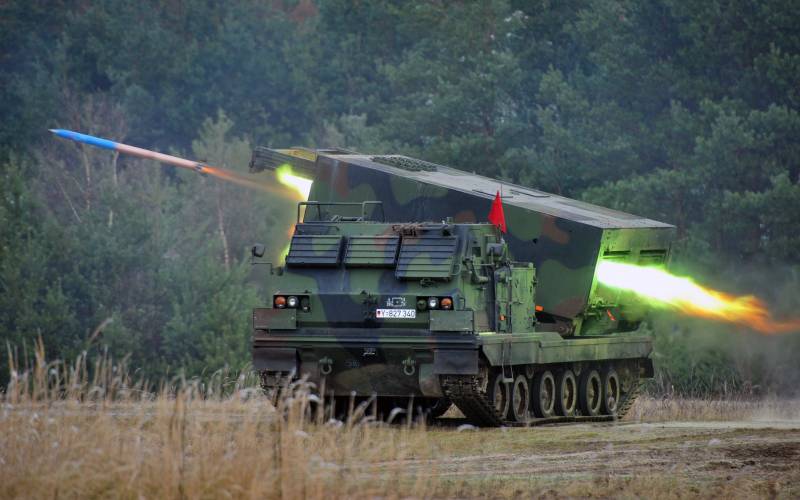
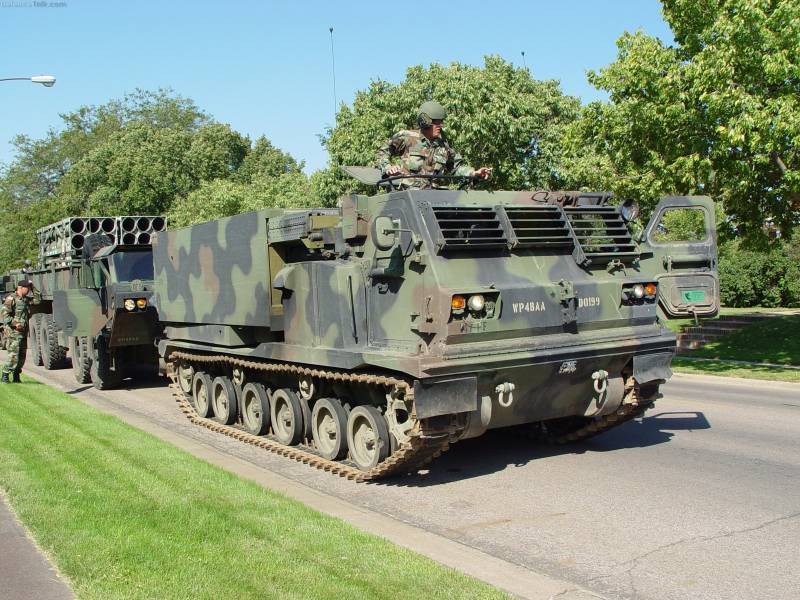
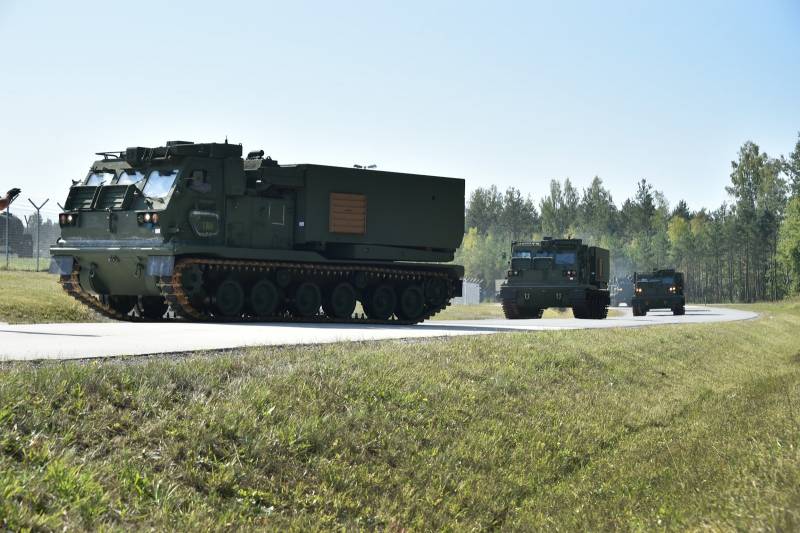
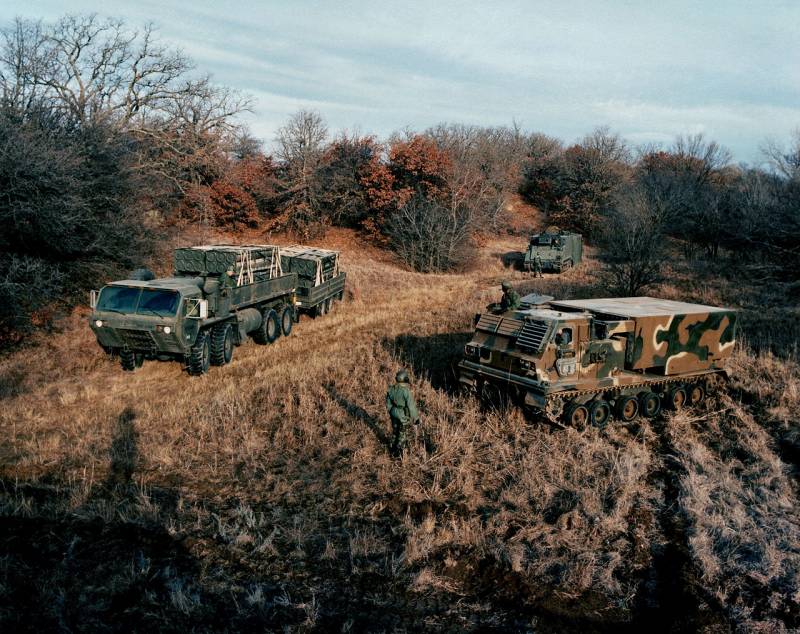
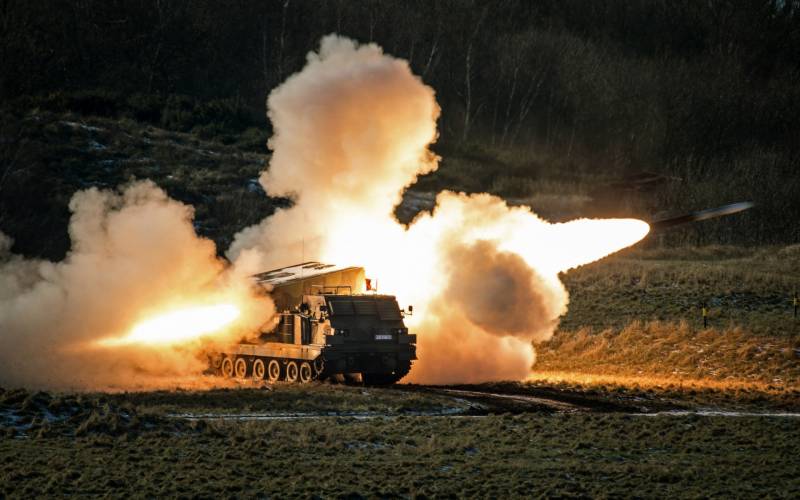
Information